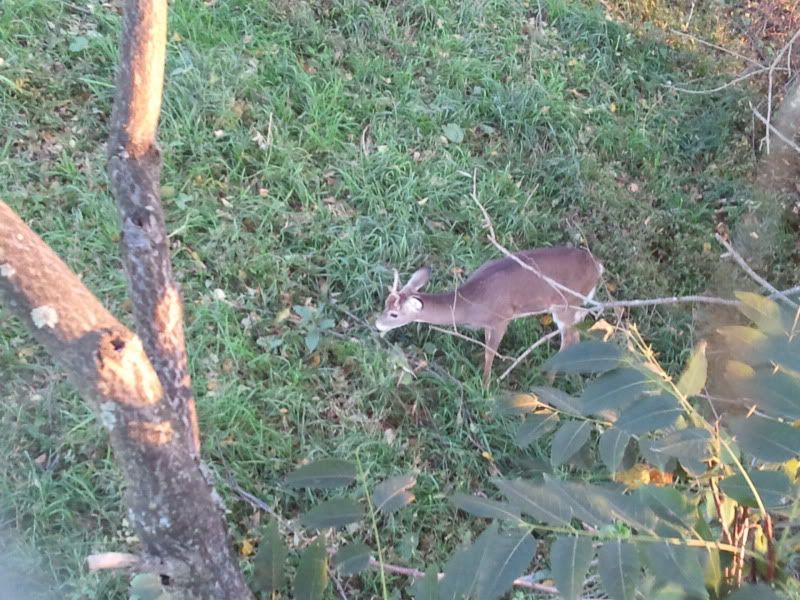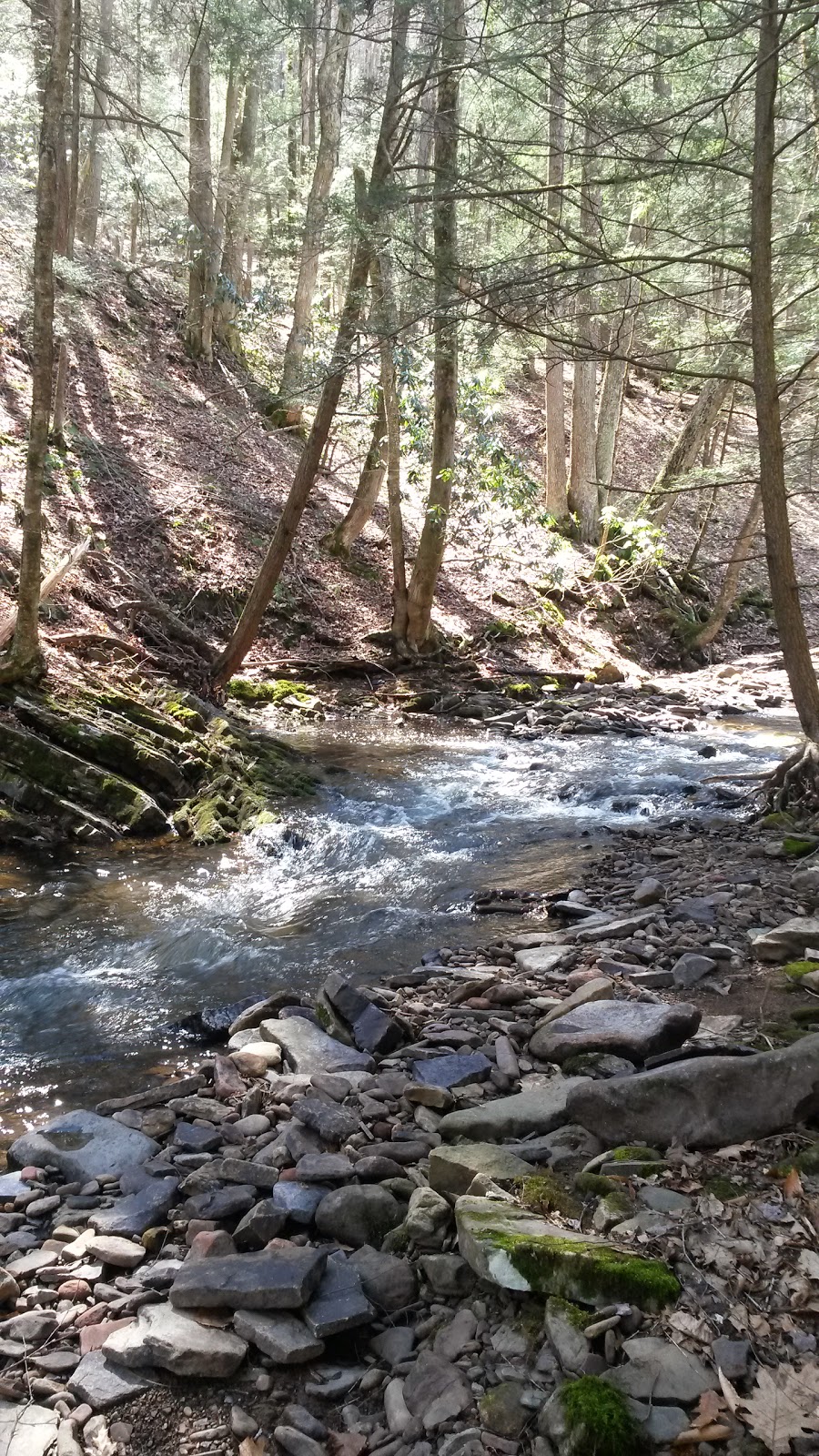Once a spike, always a spike?
Pretty much all deer hunters have heard the old saying "once a spike, always a spike." This phrase was (and is) thrown around by folks who believe that when a buck has small antlers, it will stay like that its entire life, and is mainly attributed to poor genetics.
This phrase has been widely disproved in recent years as many studies have shown that the majority of bucks killed are quite young, and that the vast majority of spikes are in their first year of antler growth. The point of this post is not to start a debate on buck harvest ideologies, but rather to show definitive proof that spikes don't always stay spikes.
I posted this picture in my last blog, and its a picture I took from my treestand last year of a small spike (approximately 6-7" high) I saw last year several times. You can't really tell from this picture, but this guy had a very gimpy back leg. It looked as though he was hit by a car, which possibly broke his leg and caused it to heal in an awkward position. Other than the gimp, this buck seemed healthy and obviously could run well enough to avoid the few coyotes that frequented the area, so I passed on him several times last year, instead trying to take a mature doe.
Well just this past week, we saw him again on our game camera, although he's not the scrubby buck you would expect a young, gimpy buck to be. Not at all, in fact, in one year of growth, he has gone from a small spike to a respectable basket-racked 8 point. I was shocked by this, mainly because of his injury/deformity. Here he is one year from being a spike.
Just makes you think about how much potential that "scrubby" buck could have, especially if it is a yearling or 2 year old buck.
This phrase has been widely disproved in recent years as many studies have shown that the majority of bucks killed are quite young, and that the vast majority of spikes are in their first year of antler growth. The point of this post is not to start a debate on buck harvest ideologies, but rather to show definitive proof that spikes don't always stay spikes.
I posted this picture in my last blog, and its a picture I took from my treestand last year of a small spike (approximately 6-7" high) I saw last year several times. You can't really tell from this picture, but this guy had a very gimpy back leg. It looked as though he was hit by a car, which possibly broke his leg and caused it to heal in an awkward position. Other than the gimp, this buck seemed healthy and obviously could run well enough to avoid the few coyotes that frequented the area, so I passed on him several times last year, instead trying to take a mature doe.
Well just this past week, we saw him again on our game camera, although he's not the scrubby buck you would expect a young, gimpy buck to be. Not at all, in fact, in one year of growth, he has gone from a small spike to a respectable basket-racked 8 point. I was shocked by this, mainly because of his injury/deformity. Here he is one year from being a spike.
Just makes you think about how much potential that "scrubby" buck could have, especially if it is a yearling or 2 year old buck.




Comments
Post a Comment